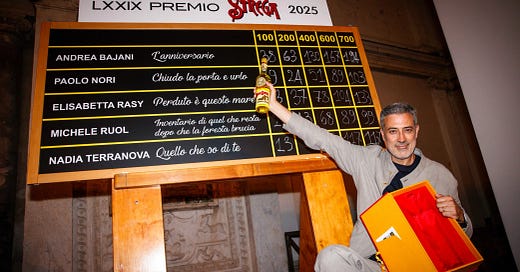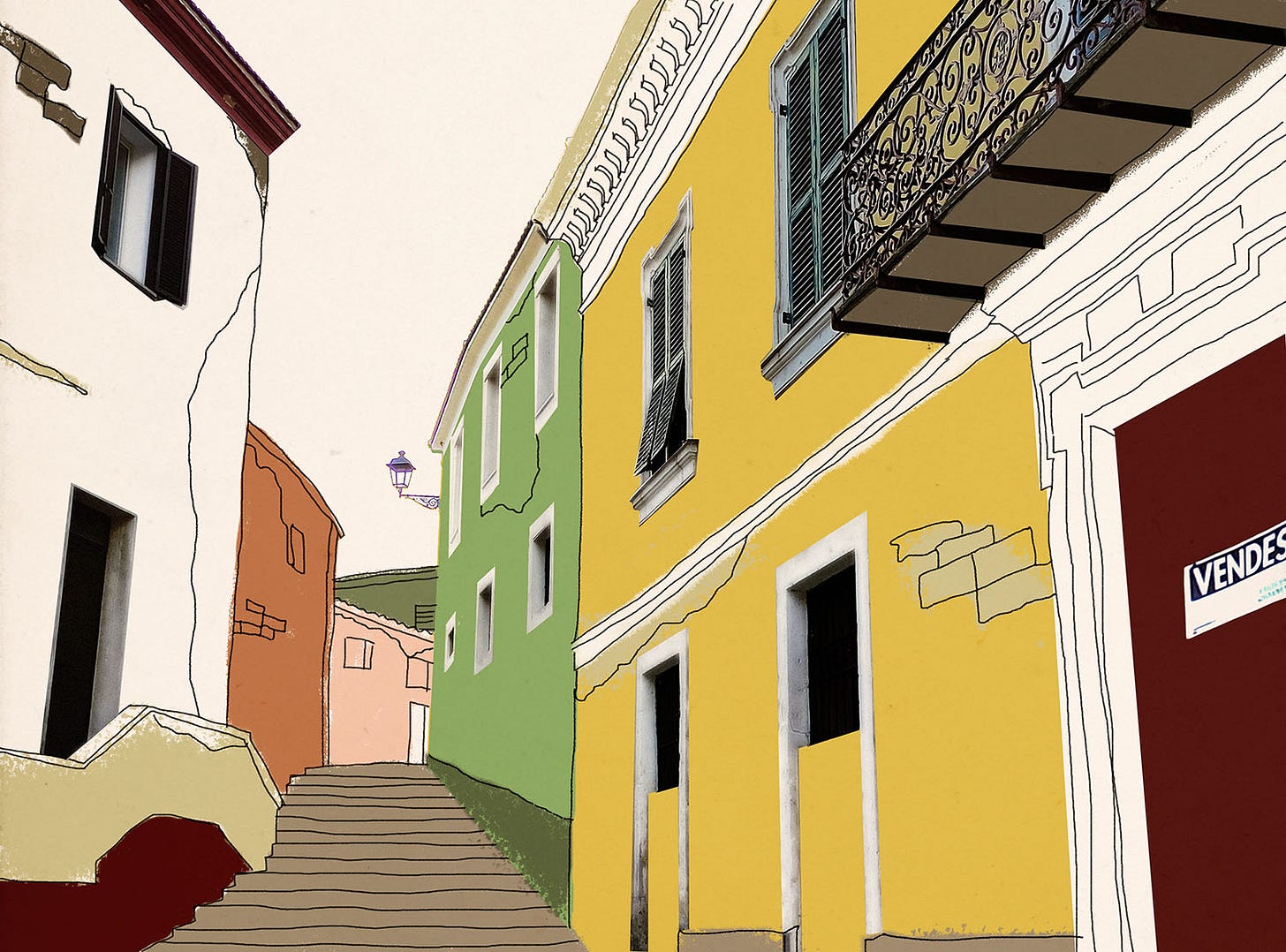Defunding the arts
Plus, Meloni’s migration mess and new fiction from Donatella di Pietrantonio
This week, journalists in Italy have been sounding the alarm about Alessandro Giuli’s increasingly ideological mission to redefine the country’s artistic agenda. It all began last month when the Culture Minister announced, unilaterally, out of the blue, that he was stripping Florence’s popular Teatro della Pergola of its national protected status (thereby cutting 20% of its budget almost overnight). The Florentines were furious, and understandably so. Many protested, accusing the Ministry of Culture (MiC) of “institutional bullying” and trying to undermine a much-loved artistic hub. Giuli, of course, denies this, insisting that he is only seeking to ensure “high standards.” Which might, of course, be an interesting topic for discussion if these standards were not so entirely opaque. This year, MiC will cut EUR 1.8 million from major festivals such as the Biennale di Venezia and the Triennale di Milano, and remove support entirely from the avant-garde Santarcangelo festival, and the Danae contemporary dance festival. Despite this, the Ministry has somehow found 500,000 euros to support something called the Festival delle Città Identitarie, which celebrates Italy’s “cultural DNA,” and it’s also approved small awards to towns that have consistently voted for the far-right. Giuli has even awarded himself 21,000 euros to cover the costs of writing and distributing his own book (!) something that, surely, breaches his ministerial code of conduct? All Italian governments use culture as a form of political control. This was as true under PD and M5S governments as it is under Giuli. The difference, to my mind, is that, unlike his predecessors, Giuli seems to be forgetting that public funds are public funds, and as such, they must be used to promote pluralistic cultural activities. It would be premature to speak of a ‘fascist takeover,’ but I for one find it worrying to see MiC espousing such a top-down vision of culture; as if the arts were a branch of a government department and nothing more.

Politicians around the world have long been applauding Georgia Meloni’s “no nonsense” approach to tackling irregular immigration. From her deal with Tunisia to opening deportation centres in Albania, a whole generation of leaders from Donald Trump to Viktor Orbán to Keir Starmer have celebrated the PM as being a “woman of action.” Well, with this backdrop in mind, it’s interesting to note that this week the Italian government announced that it is actually in need of MORE migrant workers, and the state is currently developing a new visa scheme to attract 500,000 non-EU nationals to come to work in the country. Meloni has little choice here. As a failing capitalist state, Italy needs cheap, easily exploitable labour of the kind that has propped up agriculture and construction for decades. With inflation rising, and Italian nationals rejecting low wage labour, expanding the foreign work force is, in a sense, the only viable solution to keep business going as usual. Leaving aside the dire human rights implications, I do wonder what Meloni’s supporters are going to make of this. Not least because illegal arrivals are also rising. According to new data from the Ministry of the Interior, 30,000 refugees have arrived in Italy by boat so far in 2025, an increase of 15.5% compared to last year. If Meloni’s self-stated aim has been to tackle migration as a whole, she is now struggling even on her own terms.

Do you remember that one euro house scheme that everyone seemed to be talking about just before the pandemic? Well, as some of you know, I experimented and failed to navigate that system myself a couple of years ago, and I’ve been following with interest how others have managed to get on ever since. On that topic: I read an excellent piece for VQR by Lauren Markham last week which provides a comprehensive overview of the one euro house phenomenon as a whole. Markham’s piece is autobiographical, framed by some very U.S-specific concerns. To her credit, however, she’s also done her research and gathered a lot of interesting data and anecdotes. I did not know, for example, that Vittorio Sgarbi, the art critic and TV-personality, played an instrumental role in inventing the scheme. Neither did I know that the Sicilian town of Mussomeli alone has sold 125 one euro houses, or that a cottage industry of developers is still growing in influence, especially in the South, to support the boom. If you’ve ever daydreamed about escaping to live a simpler life in a hilltop town somewhere, I strongly recommend reading Markham’s self-deprecating, ‘warts and all’ account before taking the plunge. Here’s the link.
“A dream life tends to follow the flimsy logic of an actual dream. I both wanted to sprawl upon a blanket in the Italian countryside and to be a bike or subway ride away from dozens of my closest friends in the city. I wanted days upon days of quiet solitude and to get dressed up for fun literary events whenever I felt like it. I wanted a spirit of timelessness and presence away from the capitalist grind within which I could contemplate and read and do yoga and frolic with my daughter on the hillside, but I also wanted to have someone else take care of her a lot of the time so I could work and tend to a to-do list.”
Arts & Culture: nouveaux riches
If you’re looking for a spot of Italian summer reading, well, Europa Editions has got you covered. Last week the international publisher released a new ENG translation of Donatella di Pietrantonio’s 2024 Strega Prize winning novel The Brittle Age (trans. Ann Goldstein), and if the Italian reception is anything to go by this is going to be worth reading. Like much of Di Pietrantonio’s work, the novel focuses on the experiences of women living in rural Italy. Here the protagonist is Lucia, a 40-something physiotherapist living in the Maiella mountains, who, as the action begins, is in the process of separating from her husband. When Covid strikes, and Lucia’s daughter Amanda returns from Milan to the family home, Lucia is forced to put her divorce plans on hold as she confronts the long-term fallout from an episode of sexual violence that rocked the small community years earlier. Di Pietrantonio has dedicated this novel to “all the women who have survived”; but, as Claire Pettitt put it in her TLS review, the author is above all concerned with “rebalancing the world in favour of life” and with valorising “struggle, not surrender.” You can read the full review here, and buy the book straight from the publisher if you’re interested.
I don’t know about you, but I don’t need much of an excuse to while the hours away ogling at classical Roman statues. From the Uffizi to the Capitoline Museums to the Museo Archeologico di Napoli I have often found myself standing in awe of masterful testimonies of beauty and elegance that have survived so long. Well, this week I was forced to reflect more deeply on what it means to look at such artefacts after reading an interesting short piece by Peter Frankopan in the Financial Times which is, ostensibly, a review of the photographer Don McCullin’s latest book The Roman Conceit. Frankopan points out, rightly, that many of us find Roman statues attractive because “everyone looks body-beautiful” because “there are no ominous religious messages to worry about” and, more troublingly, “because the enslaved, the oppressed and the poor stay reassuringly out of sight and out of mind.” Roman statues, he goes on, are idealized tributes to the elite that reflect desires for wealth and power that we experience virtually unchanged today. Frankopan and implicitly McCullin make a compelling case for how we can better think through these thorny matters, and I recommend reading if you’re in any way interested in the relation between aesthetics, ethics and history. So here’s the link.
Recipe of the Week: Neapolitan rum babà
If you’ve ever dined out in Naples, you will no doubt have enjoyed tucking into a babà al rum at the end of your meal. These sponge cakes, which were brought to the city by a French-Polish dynasty in the 18th Century, and which courtly chefs known as the monsu’ refined into the form we know today, were once the preserve of the rich alone. Today, in our era of cheap supermarket ingredients and social media food trends, they’ve become a popular and widely accessible treat. They’re also currently enjoying a “moment” on account of their Instagram friendly appearance and comforting, nostalgic and entirely anti-postmodern flavour profile. Well, last weekend, scrolling through various feeds, working up some cravings, I stumbled across this recipe by Valeria Necchio and decided to bake my own babà. I have to admit, the process was more difficult and time consuming than I’d been expecting, and I did make a few mistakes along the way. Nevertheless, this was a good fun project, the result was pretty solid and I really recommend the recipe if you’re sweet-toothed and looking for a weekend challenge. So here’s the link.
I’m Jamie Mackay, a UK-born, Italy-based writer, working at the interfaces of journalism, criticism, poetry, fiction, philosophy, travelogue and cultural-history. I set up ‘The Week in Italy’ to make a space to share a regular overview of the debates and dilemmas, innovations and crises that sometimes pass under the radar of our overcrowded news feeds, to explore politics, current affairs, books, arts and food. If you’re a regular reader, and you enjoy these updates, I hope you’ll consider becoming a supporter for EUR 5.00 per month. I like to think of it as a weekly catch-up chat over an espresso. Alternatively, if you’d like to send a one-off something, you can do so via PayPal using this link. Grazie!







